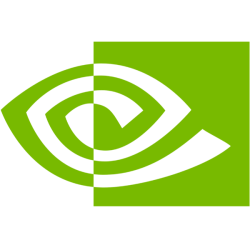NVIDIA showcases a robust business model with significant revenue growth and a strong market position, particularly in the AI and data center segments. However, geopolitical risks pose challenges that could impact future expansion.


 10Y annualized return is
excellent
at 73.7% per year
10Y annualized return is
excellent
at 73.7% per year
 NVDA has met or exceeded earnings expectations in
all
recent quarters (10/10)
NVDA has met or exceeded earnings expectations in
all
recent quarters (10/10)
 Strong Gross Profit Margin
Strong Gross Profit Margin
 High Return on Equity
High Return on Equity
 High Valuation Ratios
High Valuation Ratios
 Low Cash Ratio
Low Cash Ratio
Get access to all key takeaways, detailed financial metrics, and comprehensive stock analysis with our premium subscription.
Already have an account? Sign in
NVIDIA showcases a robust business model with significant revenue growth and a strong market position, particularly in the AI and data center segments. However, geopolitical risks pose challenges that could impact future expansion.
Analysis Date: February 26, 2025
Last Updated: May 29, 2025
Past performance does not guarantee future results. The data presented is indicative and may not be updated in real-time.
NVIDIA Corporation is a technology company that specializes in making powerful graphics cards and computer systems. Their products help improve the visual experience for gamers and are also used in professional settings like design and data analysis. Additionally, NVIDIA works on technologies for self-driving cars and artificial intelligence. They sell their products to various businesses, including computer makers, game developers, and automotive companies around the world.
Streams of revenue
Geographic Distribution
Core Products
Business Type
 Business to Business
Business to Business
Competitive Advantages
Discover all competitive advantages and strategic moats that protect NVDA's market position.
View Premium AnalysisKey Business Risks
Get comprehensive insight into all key business risks that could impact NVDA's performance.
Access Full Risk AnalysisLatest News

Nvidia (NVDA 2.34%) stock is moving higher on Tuesday as the broader market rebounds from Monday's declines. The GPU leader's share price was up by 2....

Tesla (TSLA) is set to report first quarter earnings results on Tuesday after the closing bell on Wall Street. Harvest Portfolio Management chief inve...

Shares of NVIDIA Corp. (NASDAQ: NVDA) were flat during a.m.
Trailing Twelve Months (TTM) values provide a view of the company's performance over the last year.
Benjamin Graham's value investing approach focuses on finding stocks with a significant margin of safety between their intrinsic value and market price.
Access Benjamin Graham's value investing criteria, intrinsic value calculations, and margin of safety analysis
Trailing Twelve Months (TTM) values provide a view of the company's performance over the last year.
Profitability metrics measure a company's ability to generate earnings relative to its revenue, operating costs, and other relevant metrics. Higher values generally indicate better performance.
Access detailed profitability metrics with visual gauges and benchmarks
Access detailed analysis of profitability strengths and positive performance indicators
Upgrade to PremiumAccess detailed analysis of profitability weaknesses and areas of concern
Upgrade to PremiumFinancial health metrics assess a company's ability to meet its financial obligations and its overall financial stability.
Access detailed financial health metrics with visual gauges and risk assessments
Access detailed analysis of financial health strengths and stability indicators
Upgrade to PremiumAccess detailed analysis of financial health weaknesses and risk factors
Upgrade to PremiumMeeting Expectations
Higher values indicate better execution and credibility
Recent Results
View complete earnings history and detailed performance analysis
Upgrade to PremiumEPS
Revenue
Insider trading data shows purchase and sale activities by company executives and board members.
Insider trading patterns can provide insights into how company executives and board members view the stock's future prospects.
Get complete insider sentiment analysis with detailed trading patterns, sentiment indicators, and trend insights